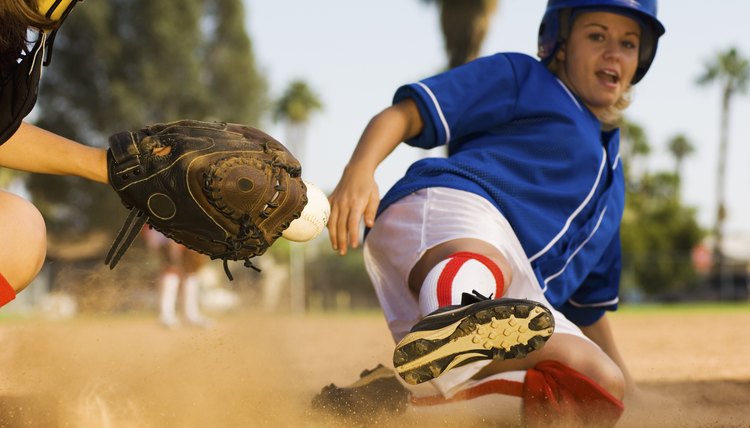Disadvantages for Girls in Sports

While Title IX and increased awareness of the opportunities for girls in sports have improved the situation over the past few generations, girls in sports still face some disadvantages. Girls may not have the chances to participate in sports that boys do, or the resources needed to succeed. They also may face greater risk of injury than their male counterparts.
Lack of Opportunities
The Women’s Sports Foundation reports that girls have 1.3 million fewer opportunities to participate in high school sports than boys do. This doesn't take into account the difficulties that occur when girls have to force their way into a sport that traditionally is geared towards boys. For example, girls may have a tough time joining Little League Baseball teams, although Mo'ne Davis and her standout performance in the 2014 Little League World Series may change that. Girls who hope to play football or join the wrestling team may have to overcome resistance and skepticism that would not be shown to boys.
Resource Allocation
Just because girls may have teams to play on doesn’t mean they’ll have the same resources that boys do. Equality implies similar treatment as far as equipment and supplies, locker room and practice facilities, scheduling of games and practice times, and other variables. A girls soccer team, for example, may have the same roster spots as the boys, but not the same access to tournaments or travel opportunities. A girls field hockey team may be relegated to an inferior field on a regular basis so a boys soccer squad can use the better facilities.
Injury Risk
Sports provide injury risks for everyone, but in some cases it appears that women are more vulnerable. A study in the American Journal of Sports Medicine indicated that girls reported twice as many concussions as the result of soccer injuries when compared to boys. Skiers and basketball players suffer a disproportionate number of knee injuries compared to men. This disadvantage increases when it's compounded by a lack of qualified coaching or on-site medical personnel that boys sports may receive.
Fewer Role Models
Girls don’t have a shortage of successful athletes they can point to as examples of female sports achievement, with Mia Hamm, Brittney Grenier and Missy Franklin just three examples. But on a daily basis, women’s sports don’t get the depth and breadth of coverage that men’s sports do, and highlights can be harder to find. In addition, the Women’s Sports Foundation reports that peer pressure and social expectations may keep girls away from sports in favor of other activities.
References
- The Globe and Mail: Agony On The Slopes – Should Women Jump
- Women’s Sports Foundation: Do You Know the Factors Influencing Girls’ Participation in Sports?
- Boston Globe Magazine: Why Do Fans Ignore Women’s Pro Sports?
- Kennedy Krieger Institute. IAN research report #12: girls with ASD. December 2, 2009
- Sarris M. Not just for boys: When autism spectrum disorders affect girls. Interactive Autism Network at Kennedy Krieger Institute.
- Werling DM, Geschwind DH. Sex differences in autism spectrum disorders. Current Opinion in Neurology. 2013 Apr;26(2):146. doi:10.1097%2FWCO.0b013e32835ee548
- Dworzynski K, Ronald A, Bolton P, Happé F. How different are girls and boys above and below the diagnostic threshold for autism spectrum disorders?. Journal of the American Academy of Child & Adolescent Psychiatry. 2012 Aug 1;51(8):788-97. doi:10.1016/j.jaac.2012.05.018
- Frazier TW, Georgiades S, Bishop SL, Hardan AY. Behavioral and cognitive characteristics of females and males with autism in the Simons Simplex Collection. J Am Acad Child Adolesc Psychiatry. 2014;53(3):329–40.e403. doi:10.1016/j.jaac.2013.12.004
- Nichols S. A girl's-eye view: Detecting and understanding autism spectrum disorders in females. Interactive Autism Network at Kennedy Krieger Institute.
